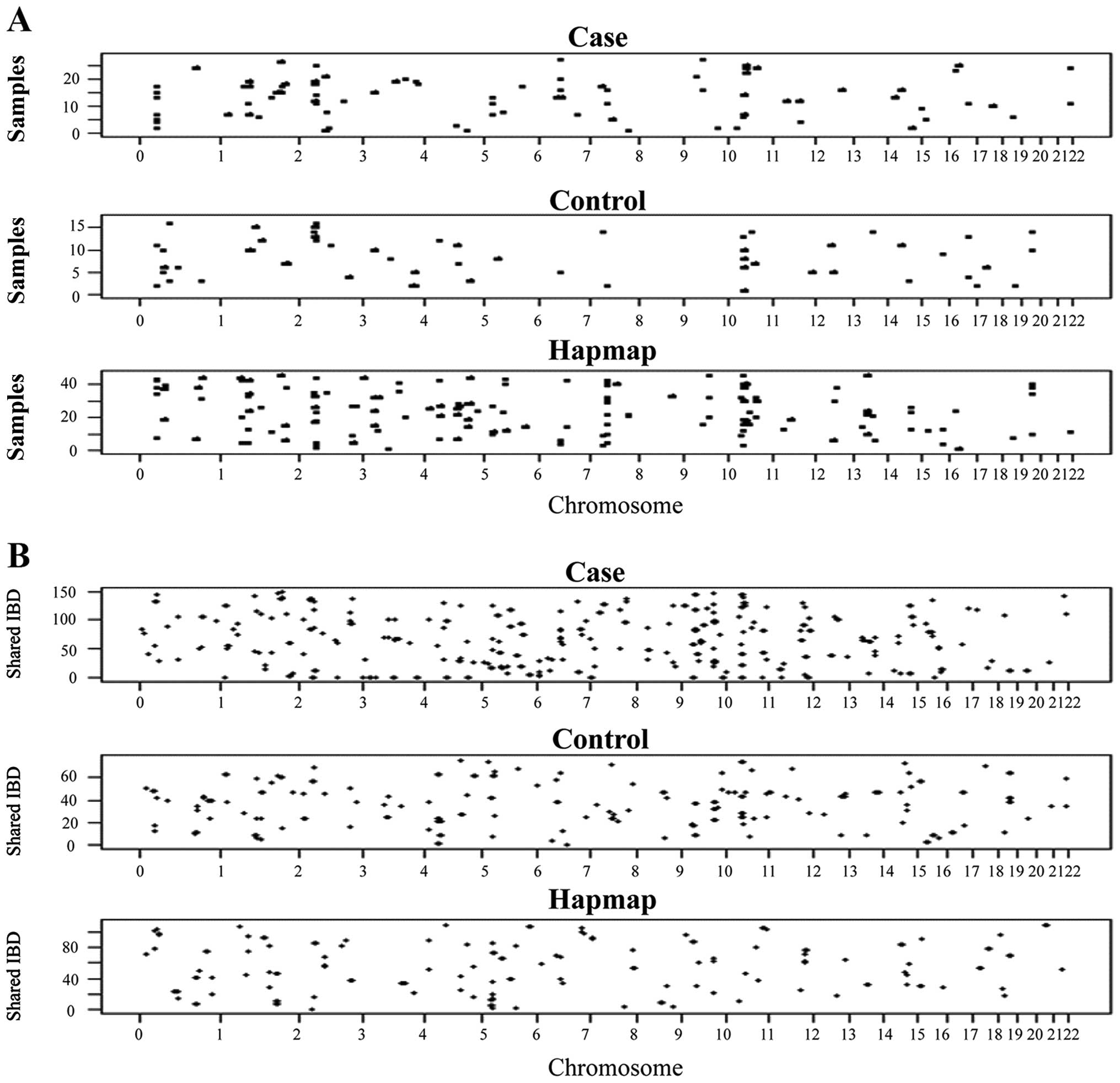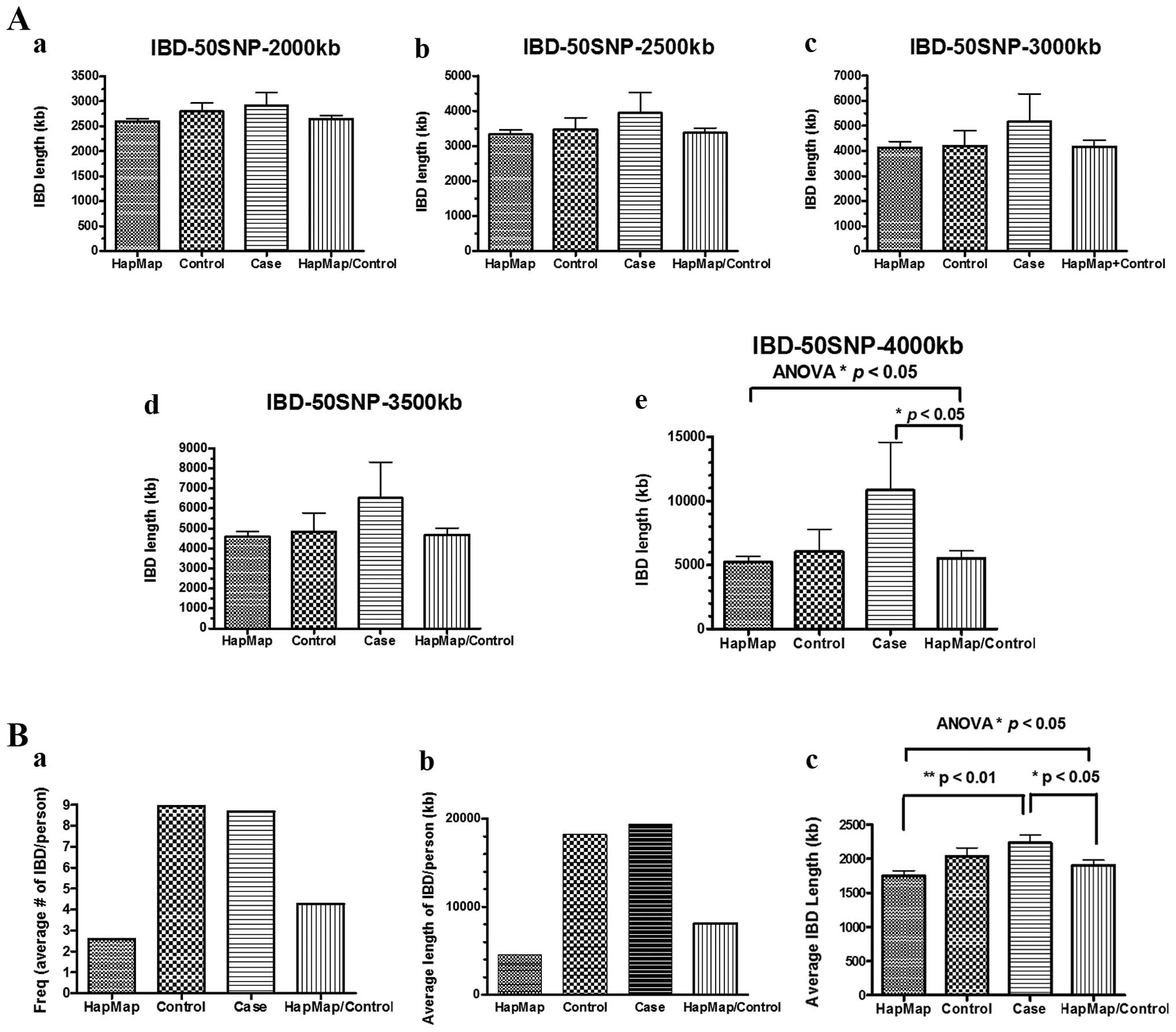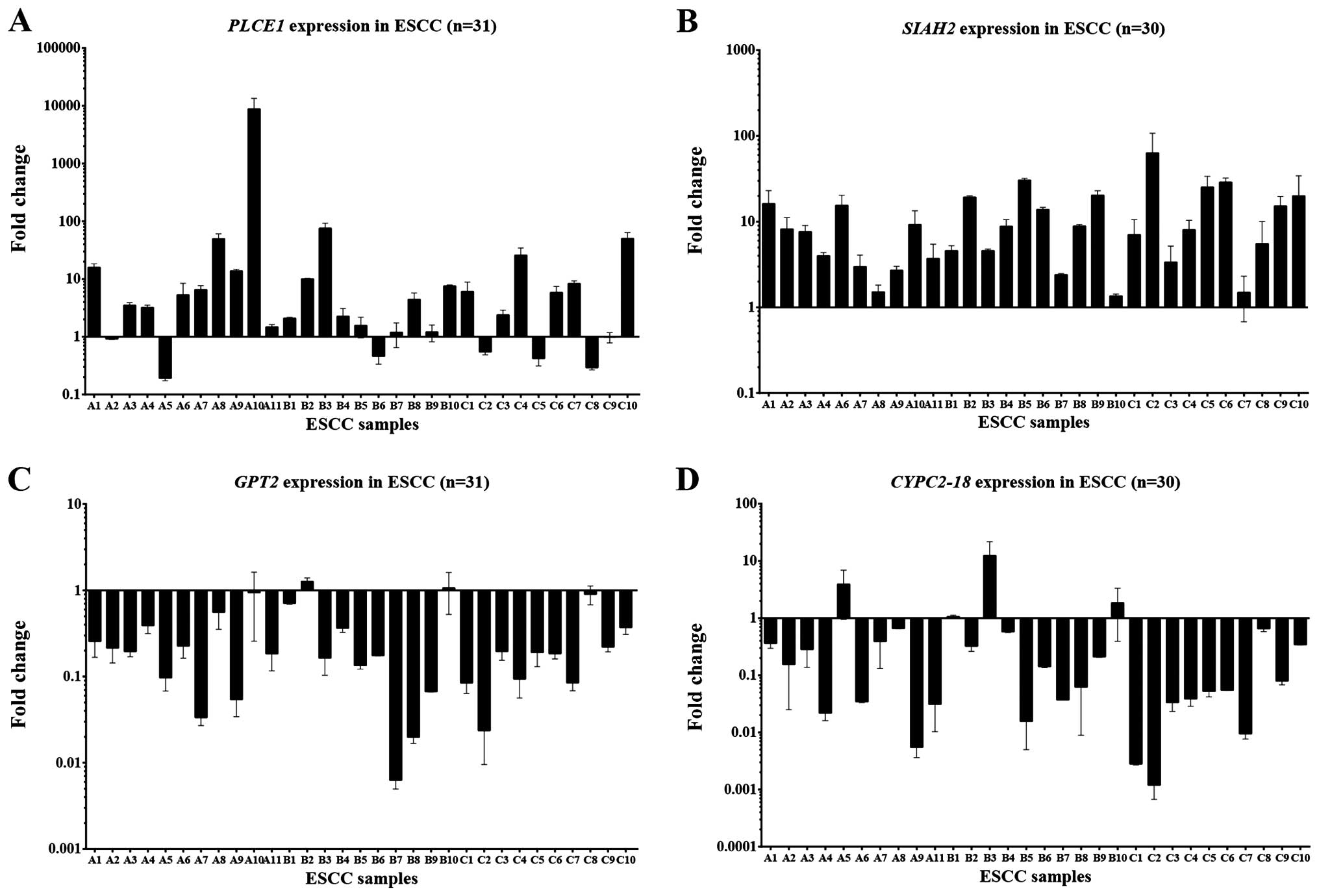|
1
|
Parkin DM, Bray F, Ferlay J and Pisani P:
Global cancer statistics, 2002. CA Cancer J Clin. 55:74–108. 2005.
View Article : Google Scholar
|
|
2
|
Tran GD, Sun XD, Abnet CC, et al:
Prospective study of risk factors for esophageal and gastric
cancers in the Linxian general population trial cohort in China.
Int J Cancer. 113:456–463. 2005. View Article : Google Scholar : PubMed/NCBI
|
|
3
|
Zhang W, Bailey-Wilson JE, Li W, et al:
Segregation analysis of esophageal cancer in a moderately
high-incidence area of northern China. Am J Hum Genet. 67:110–119.
2000. View
Article : Google Scholar : PubMed/NCBI
|
|
4
|
Qiao YL, Hou J, Yang L, et al: The trends
and preventive strategies of esophageal cancer in high-risk areas
of Taihang Mountains, China. Zhongguo Yi Xue Ke Xue Yuan Xue Bao.
23:10–14. 2001.(In Chinese).
|
|
5
|
Xibib S, Meilan H, Moller H, et al: Risk
factors for oesophageal cancer in Linzhou, China: a case-control
study. Asian Pac J Cancer Prev. 4:119–124. 2003.PubMed/NCBI
|
|
6
|
Yokokawa Y, Ohta S, Hou J, et al:
Ecological study on the risks of esophageal cancer in Ci-Xian,
China: the importance of nutritional status and the use of well
water. Int J Cancer. 83:620–624. 1999. View Article : Google Scholar : PubMed/NCBI
|
|
7
|
Yang CS: Research on esophageal cancer in
China: a review. Cancer Res. 40:2633–2644. 1980.PubMed/NCBI
|
|
8
|
Hu N, Dawsey SM, Wu M, et al: Familial
aggregation of oesophageal cancer in Yangcheng County, Shanxi
Province, China. Int J Epidemiol. 21:877–882. 1992. View Article : Google Scholar : PubMed/NCBI
|
|
9
|
Zhang G, Su M, Wang D, et al: Genetic
heterogeneity of oesophageal cancer in high-incidence areas of
Southern and Northern China. PLoS One. 5:e96682010. View Article : Google Scholar : PubMed/NCBI
|
|
10
|
Su H, Hu N, Shih J, et al: Gene expression
analysis of esophageal squamous cell carcinoma reveals consistent
molecular profiles related to a family history of upper
gastrointestinal cancer. Cancer Res. 63:3872–3876. 2003.
|
|
11
|
Hu N, Roth MJ, Polymeropolous M, et al:
Identification of novel regions of allelic loss from a genomewide
scan of esophageal squamous-cell carcinoma in a high-risk Chinese
population. Genes Chromosomes Cancer. 27:217–228. 2000. View Article : Google Scholar : PubMed/NCBI
|
|
12
|
Hu N, Wang C, Su H, et al: High frequency
of CDKN2A alterations in esophageal squamous cell carcinoma
from a high-risk Chinese population. Genes Chromosomes Cancer.
39:205–216. 2004.
|
|
13
|
Hu N, Wang C, Ng D, et al: Genomic
characterization of esophageal squamous cell carcinoma from a
high-risk population in China. Cancer Res. 69:5908–5917. 2009.
View Article : Google Scholar : PubMed/NCBI
|
|
14
|
Hu N, Su H, Li WJ, et al: Allelotyping of
esophageal squamous-cell carcinoma on chromosome 13 defines
deletions related to family history. Genes Chromosomes Cancer.
44:271–278. 2005. View Article : Google Scholar : PubMed/NCBI
|
|
15
|
Bacolod MD, Schemmann GS, Wang S, et al:
The signatures of autozygosity among patients with colorectal
cancer. Cancer Res. 68:2610–2621. 2008. View Article : Google Scholar : PubMed/NCBI
|
|
16
|
Broman KW and Weber JL: Long homozygous
chromosomal segments in reference families from the centre d’Etude
du polymorphisme humain. Am J Hum Genet. 65:1493–1500.
1999.PubMed/NCBI
|
|
17
|
Assie G, LaFramboise T, Platzer P and Eng
C: Frequency of germline genomic homozygosity associated with
cancer cases. JAMA. 299:1437–1445. 2008. View Article : Google Scholar : PubMed/NCBI
|
|
18
|
Rudan I, Rudan D, Campbell H, et al:
Inbreeding and risk of late onset complex disease. J Med Genet.
40:925–932. 2003. View Article : Google Scholar : PubMed/NCBI
|
|
19
|
Lebel RR and Gallagher WB: Wisconsin
consanguinity studies. II: Familial adenocarcinomatosis. Am J Med
Genet. 33:1–6. 1989. View Article : Google Scholar : PubMed/NCBI
|
|
20
|
Shami SA, Qaisar R and Bittles AH:
Consanguinity and adult morbidity in Pakistan. Lancet. 338:9541991.
View Article : Google Scholar : PubMed/NCBI
|
|
21
|
Kanai N, Fujii T, Saito K and Tokoyama T:
Rapid and simple method for preparation of genomic DNA from easily
obtainable clotted blood. J Clin Pathol. 47:1043–1044. 1994.
View Article : Google Scholar : PubMed/NCBI
|
|
22
|
Purcell S, Neale B, Todd-Brown K, et al:
PLINK: a tool set for whole-genome association and population-based
linkage analyses. Am J Hum Genet. 81:559–575. 2007. View Article : Google Scholar : PubMed/NCBI
|
|
23
|
Browning SR and Browning BL:
High-resolution detection of identity by descent in unrelated
individuals. Am J Hum Genet. 86:526–539. 2010. View Article : Google Scholar : PubMed/NCBI
|
|
24
|
Chan SH, Yee Ko JM, Chan KW, et al: The
ECM protein LTBP-2 is a suppressor of esophageal squamous cell
carcinoma tumor formation but higher tumor expression associates
with poor patient outcome. Int J Cancer. 129:565–573. 2011.
View Article : Google Scholar : PubMed/NCBI
|
|
25
|
Cheung AK, Ko JM, Lung HL, et al:
Cysteine-rich intestinal protein 2 (CRIP2) acts as a
repressor of NF-κB-mediated proangiogenic cytokine transcription to
suppress tumorigenesis and angiogenesis. Proc Natl Acad Sci USA.
108:8390–8395. 2011.PubMed/NCBI
|
|
26
|
Cheung AK, Lung HL, Hung SC, et al:
Functional analysis of a cell cycle-associated, tumor-suppressive
gene, protein tyrosine phosphatase receptor type G, in
nasopharyngeal carcinoma. Cancer Res. 68:8137–8145. 2008.
View Article : Google Scholar
|
|
27
|
Rudan I: Inbreeding and cancer incidence
in human isolates. Hum Biol. 71:173–187. 1999.PubMed/NCBI
|
|
28
|
Lander ES and Botstein D: Homozygosity
mapping: a way to map human recessive traits with the DNA of inbred
children. Science. 236:1567–1570. 1987. View Article : Google Scholar : PubMed/NCBI
|
|
29
|
Reversade B, Escande-Beillard N,
Dimopoulou A, et al: Mutations in PYCR1 cause cutis laxa
with progeroid features. Nat Genet. 41:1016–1021. 2009.
|
|
30
|
Wang LD, Zhou FY, Li XM, et al:
Genome-wide association study of esophageal squamous cell carcinoma
in Chinese subjects identifies susceptibility loci at PLCE1
and C20orf54. Nat Genet. 42:759–763. 2010. View Article : Google Scholar : PubMed/NCBI
|
|
31
|
Abnet CC, Freedman ND, Hu N, et al: A
shared susceptibility locus in PLCE1 at 10q23 for gastric
adenocarcinoma and esophageal squamous cell carcinoma. Nat Genet.
42:764–767. 2010.
|
|
32
|
Wu C, Hu Z, He Z, et al: Genome-wide
association study identifies three new susceptibility loci for
esophageal squamous-cell carcinoma in Chinese populations. Nat
Genet. 43:679–684. 2011. View
Article : Google Scholar : PubMed/NCBI
|
|
33
|
Bunney TD and Katan M: Phospholipase C
epsilon: linking second messengers and small GTPases. Trends Cell
Biol Biol. 16:640–648. 2006. View Article : Google Scholar : PubMed/NCBI
|

















